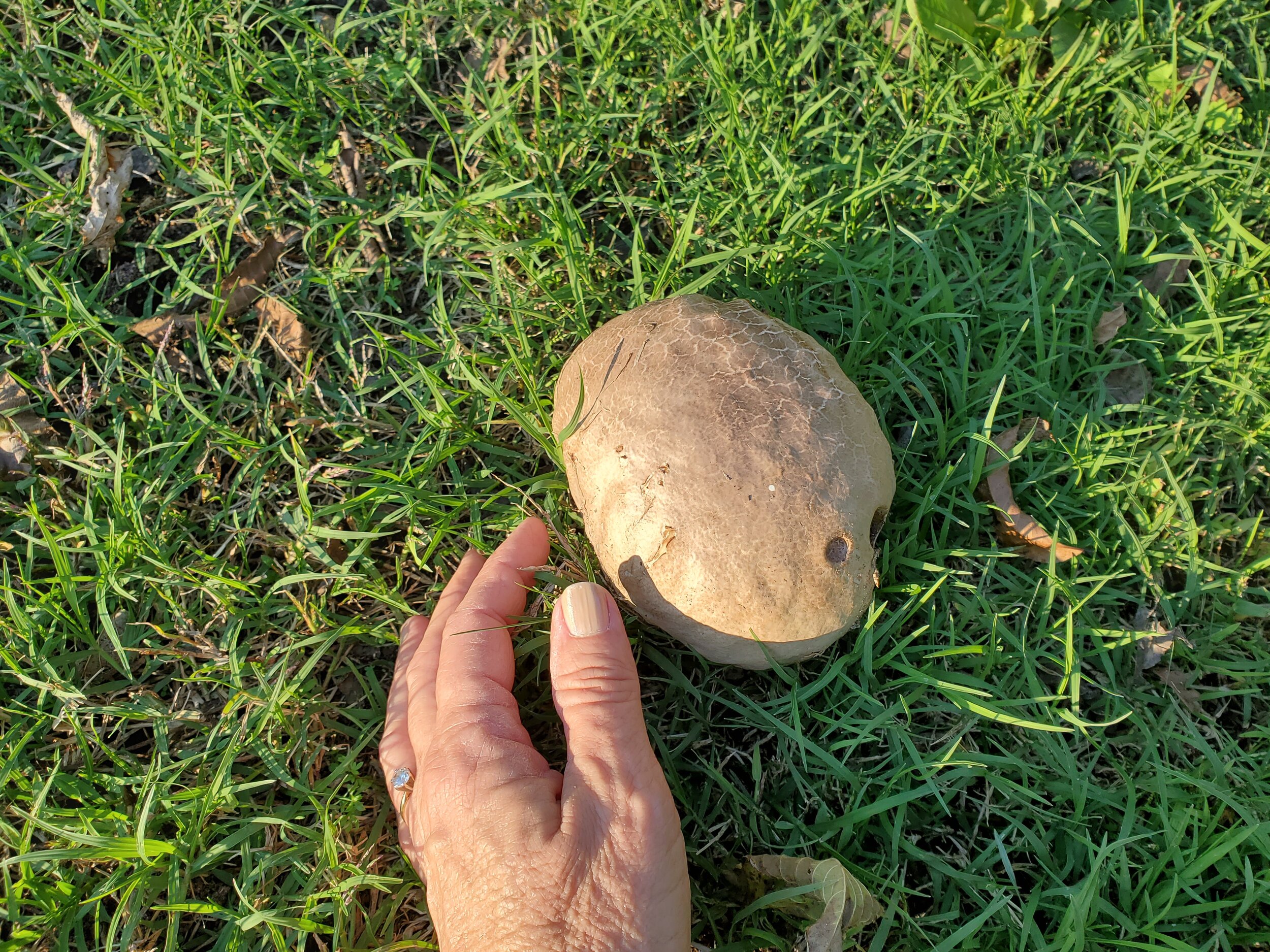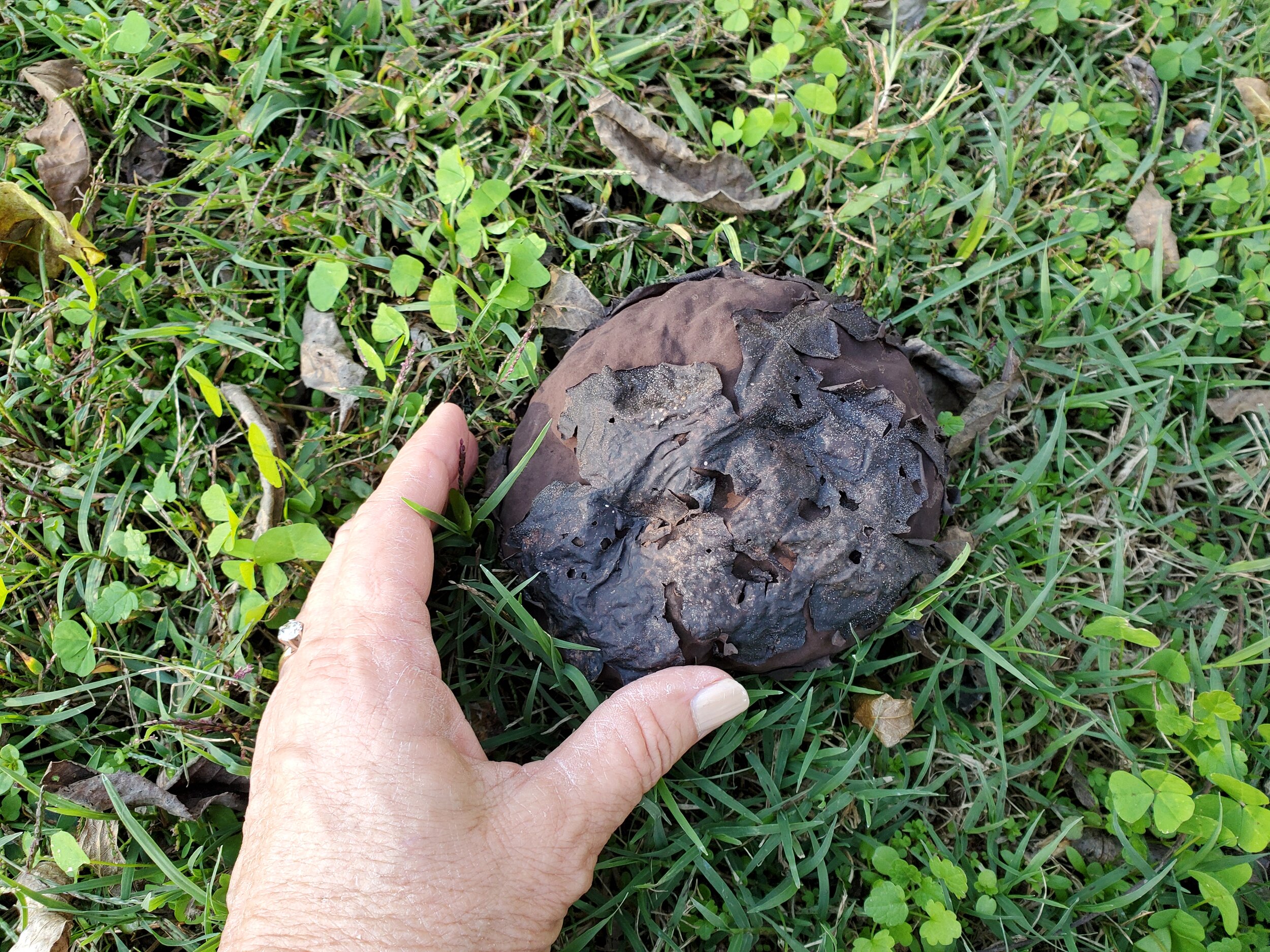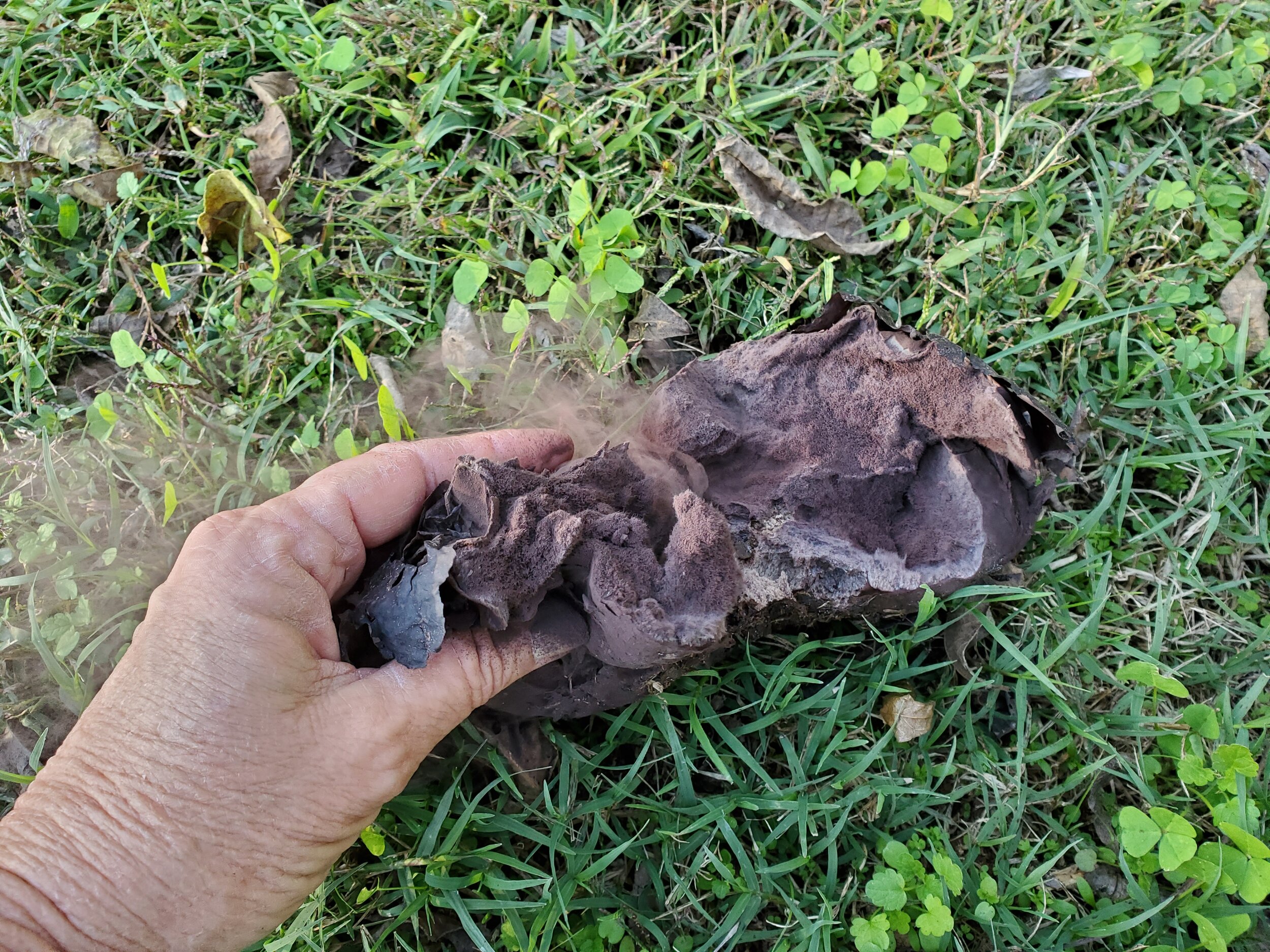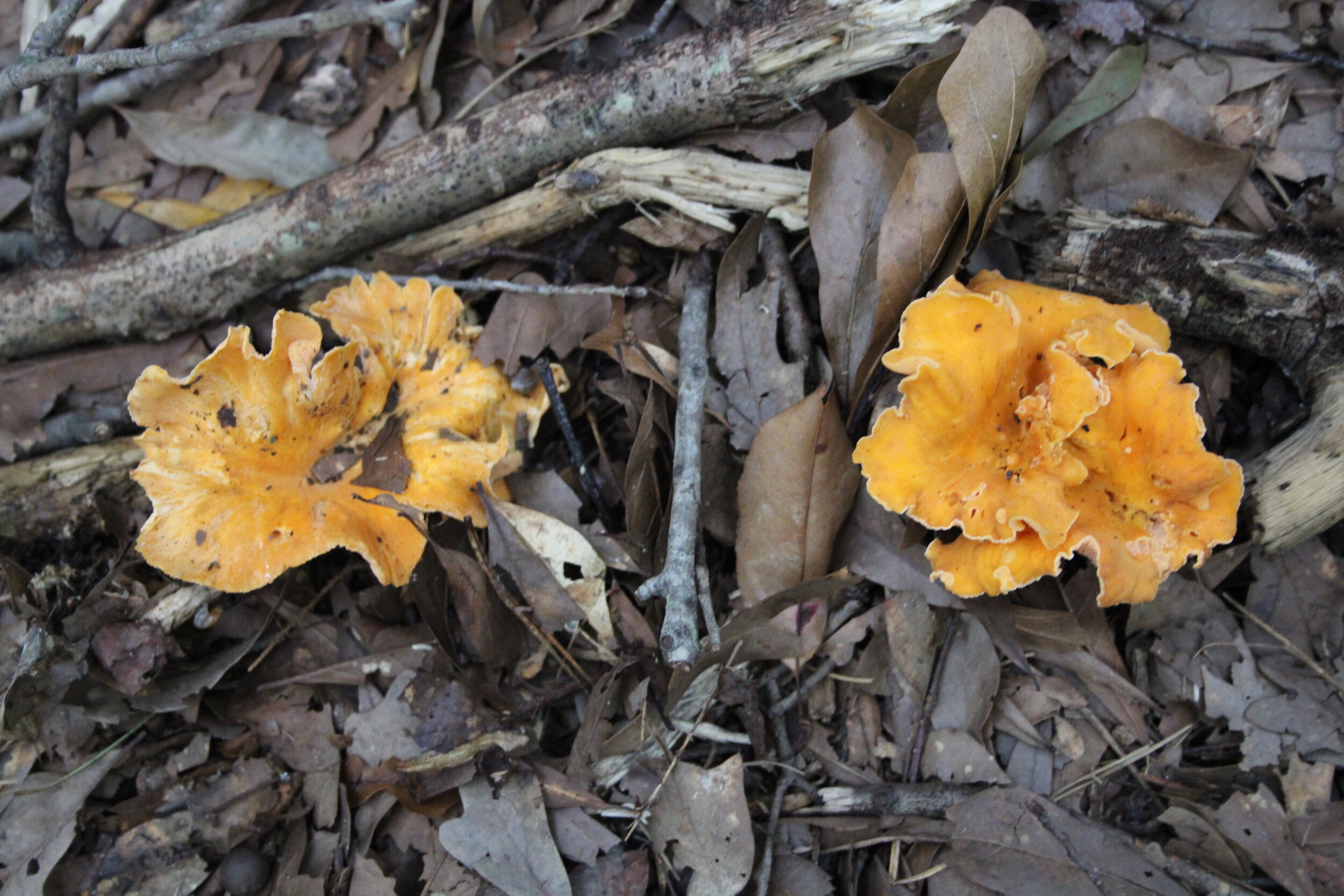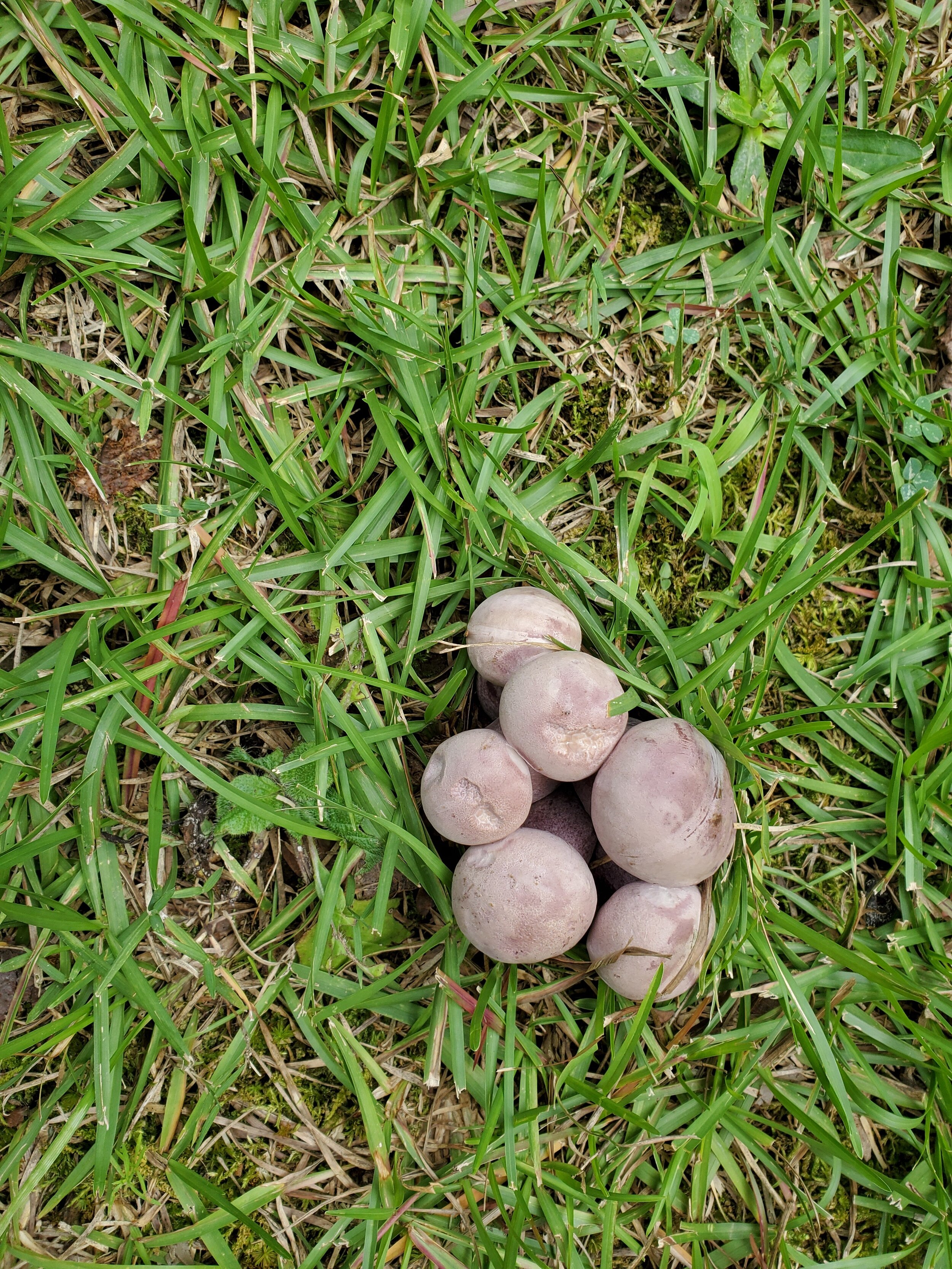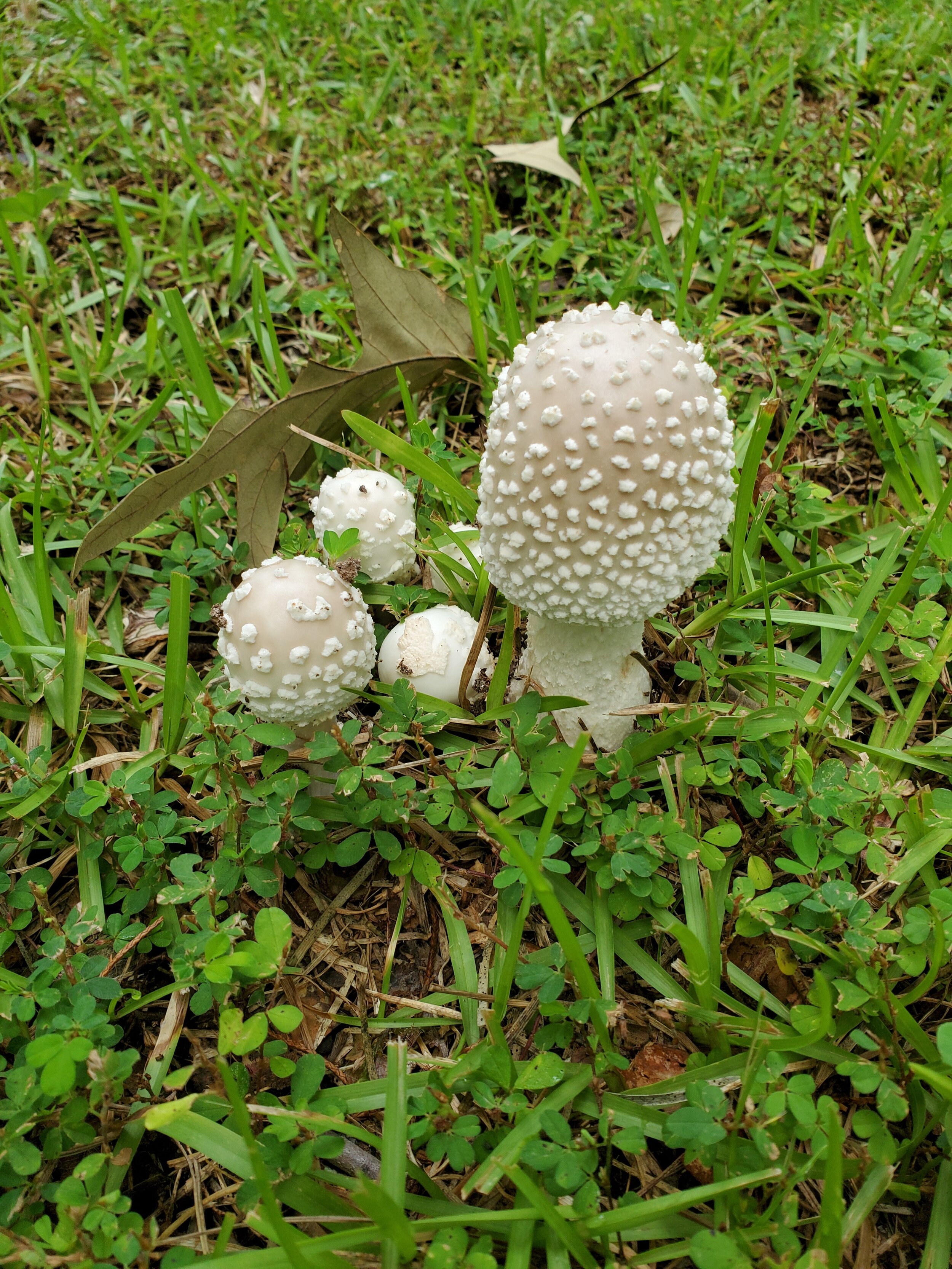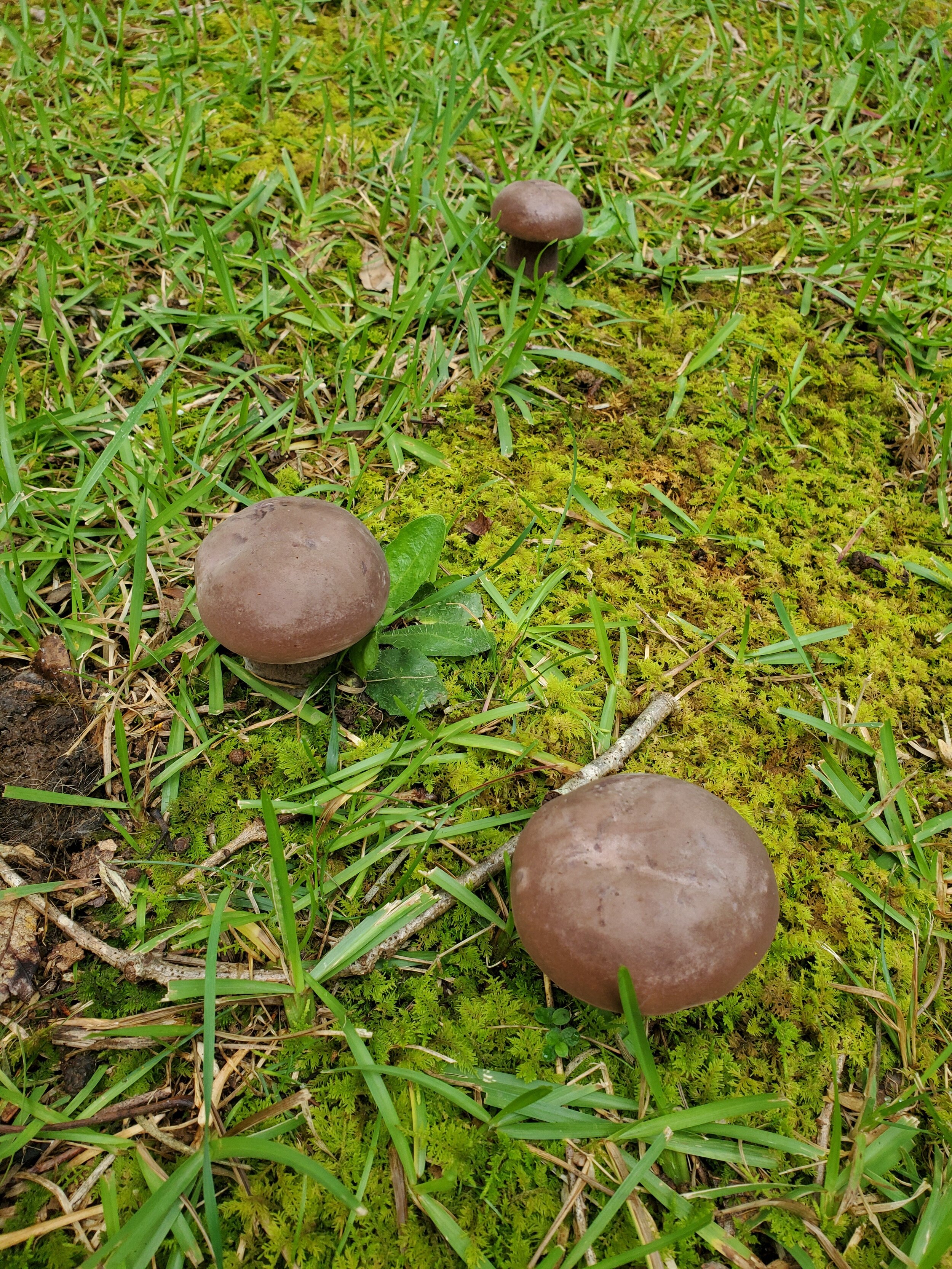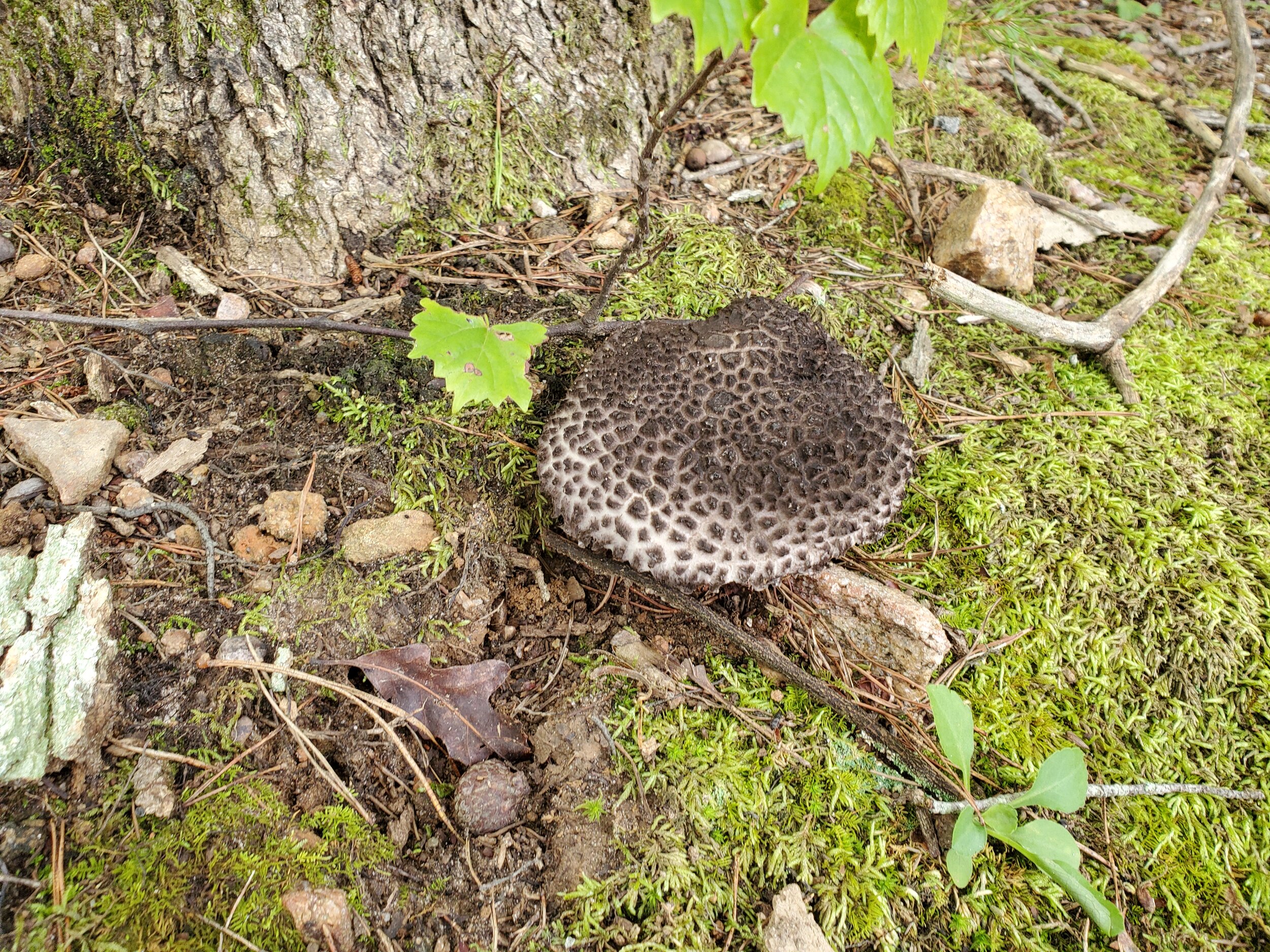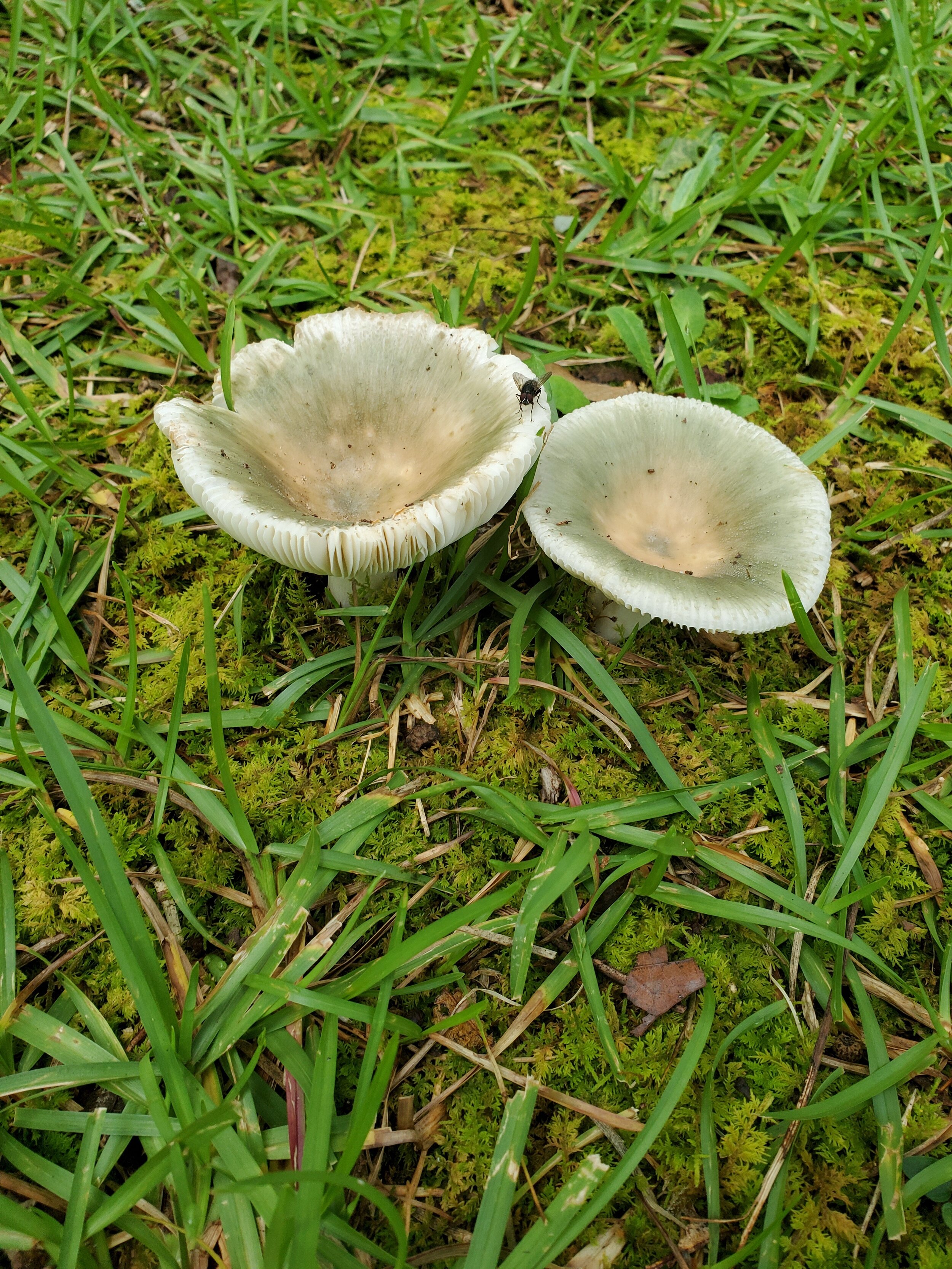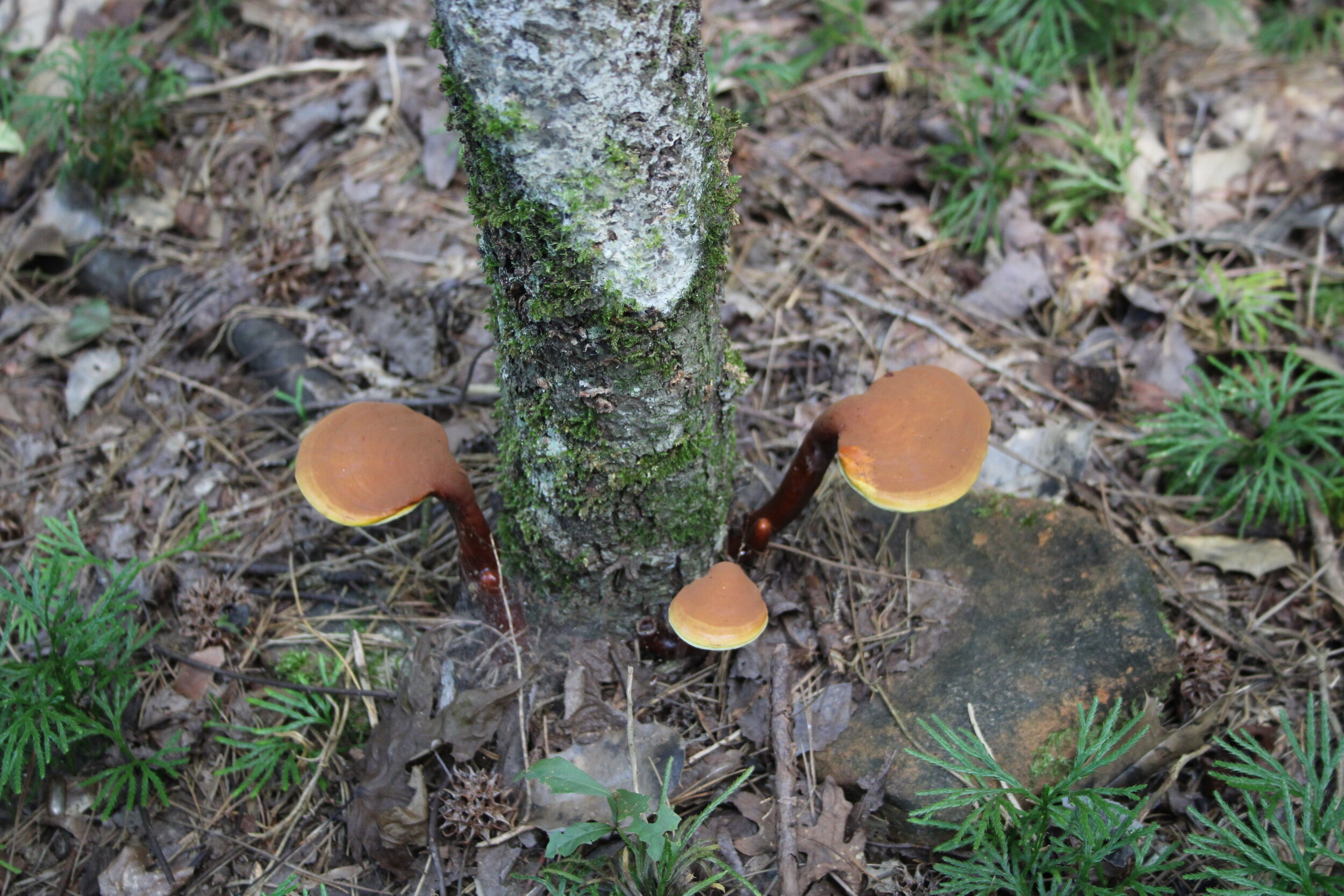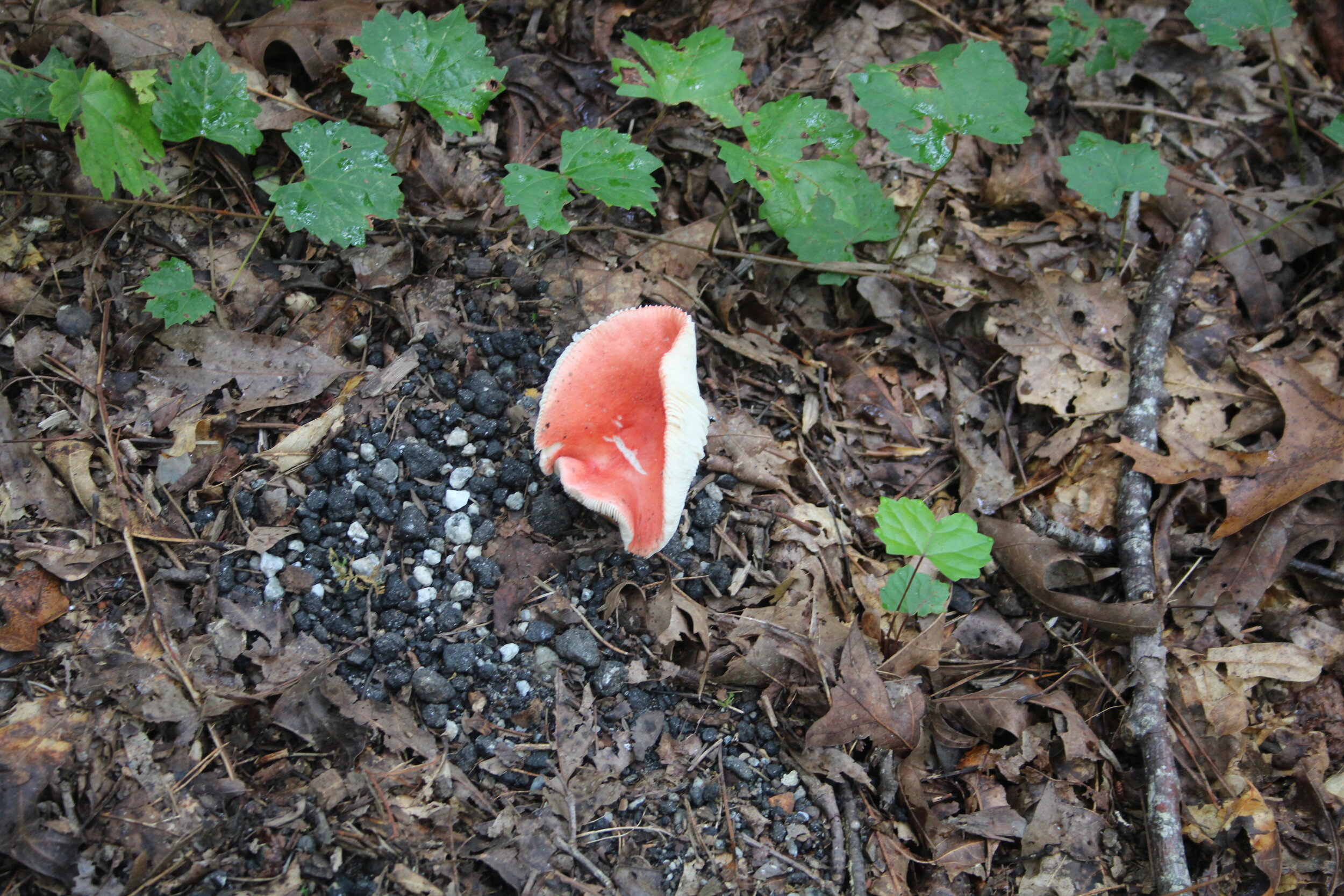There is a silly joke that goes, “No matter how big and tough you are, when a 3-year old hands you their toy telephone, you pretend to answer it.” It is this childlike spirit within that makes it impossible to leave a puffball mushroom alone.
Puffballs (Pisolithus arhizus - no idea how to pronounce it) initially appear as innocent little round white orbs, smaller than a golf ball. If removed from the soil, they will have a thick base with yellowish mycelial threads. If you crack one open at this stage, the inside is dark brown and moist, like chocolate cake. Left alone in the ground for a few days, it enlarges, darkens slightly, and flattens. In a few more days, it turns black and evil looking. It is at this stage that they are so tempting. One simply must step on it to generate puffs of black “smoke,” hence the name “puffball.” Other common names are Dog Turd Fungi, Dead Man’s Foot, and Dyemaker’s Puffballs. The last is because the immature fungi can be used to dye wool a dark brown, if you are ever tempted to take up your own cloth color customization.
Puffballs are common around conifers or oaks, in areas with poor soil. The “smoke” is actually airborne spores. While Americans consider them unsightly and a nuisance, gardeners and foresters in Great Britain welcome them. Puffballs form mycorrhizas with almost any kind of root. Mycorrhiza promotes plant growth, especially in poor soils. You can order bags of mycorrhiza for incorporation into planting holes, but unless the fungi have been handled carefully (kept cool and damp, not riding around in a delivery van for several days) they are likely to arrive dead. This is not something you can detect visually.
Puffballs are NOT edible and may even be toxic. I have found several interesting varieties of mushrooms growing in surrounding woodlands over the past two weeks. I have included photos of a few so that you can enjoy their earthy beauty with me. Until I can identify with certainty which ones are edible and which ones are not, I will not incorporate them into my recipes. In fact, my husband was extremely dubious over home-cooked dinners for a week or so after he saw that I had purchased a mushroom identification book. We will enjoy them visually – for now.

